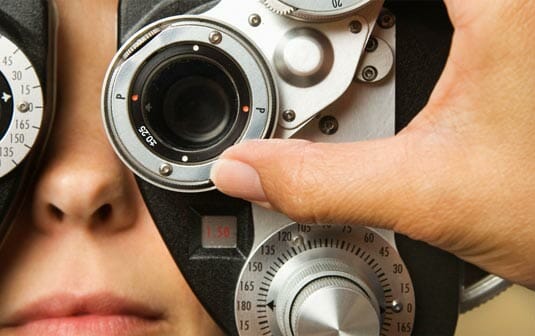What Kinds of Tests Do Optometrists Perform and Why?

During a routine, perhaps yearly visit to your professional optometrist, often times, a battery of eye examinations may be performed in order to determine the strength and health of the patient’s eyes. If there is any history of disorder or disease, or if previous visits had led to a determination of the onset of a common eye condition, then your doctor may perform further tests to gauge the progress of these conditions.
Today, we’ll go over some of the many tests that your optometrist may perform, and the reasons why these tests may be required. As always, it is best to speak directly with a licensed, professional optometrist to learn more about these examinations.
Common Eye Examinations and Why They May Be Required
Applanation Tonometry: This test is most typically performed so that an optometrist may diagnose glaucoma in a patient. During the exam, the doctor measures how much pressure is needed to flatten part of the cornea.
Corneal and/or Retinal Topography: These types of tests are conducted through the use of a special computer. During the examination, the computer creates a map that shows the doctor details about the surface of the retina, including the curvature of the cornea. If there are any irregularities in the eye’s surface, these will show up on the test.
Dilated Pupillary Exam: Some patients may recall this test being conducted on either themselves, or on a loved on who later required a ride back to their house. The test involves the placement of eye drops in the patient’s eyes. Due to the nature of the drops, the pupils become dilated, after which time the optometrist performs a more thorough examination on the patient’s retinas, looking for any indications of disease.
Slit-Lamp Exam: During this type of test, the optometrist will examine the patient’s eye, aided by both a microscope, as well of a beam of light that is shaped like a slit, and focused on the eye. Through this test, a doctor will be able to look for a number of various eye conditions, including macular degeneration and cataracts.
[Photo Via: breamalloptometrists]

